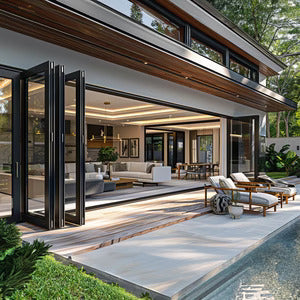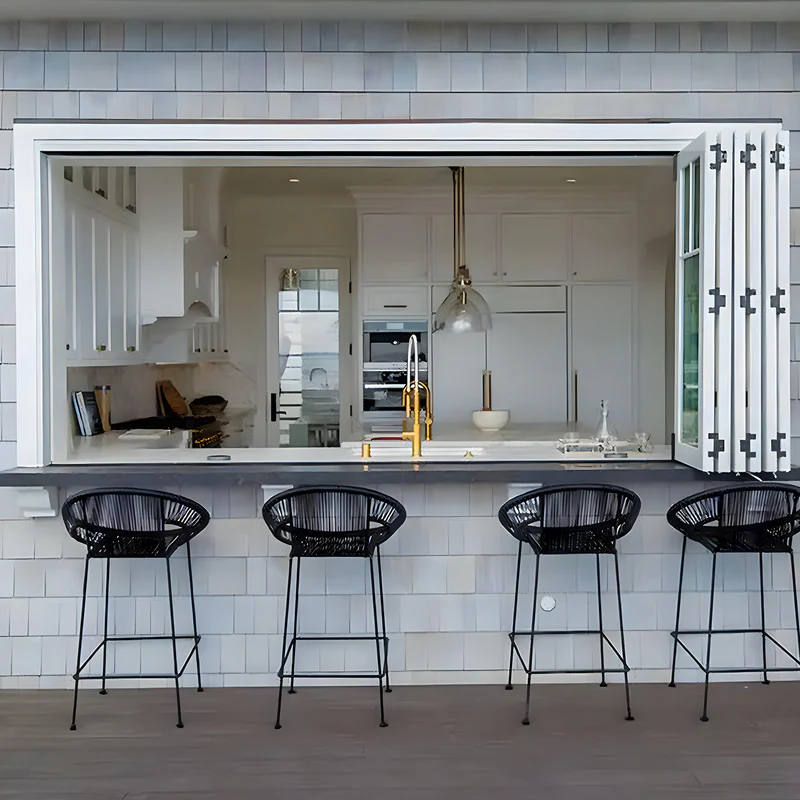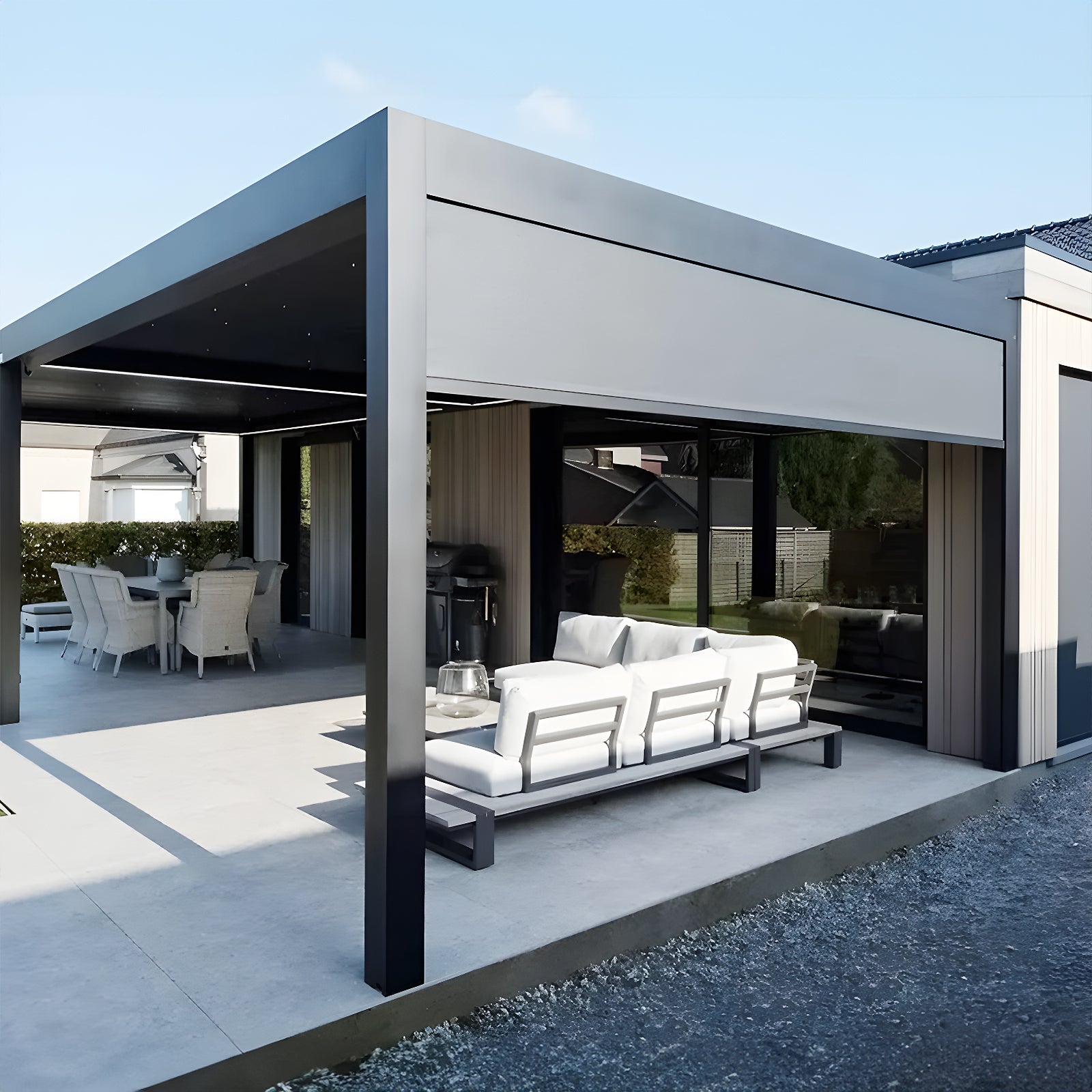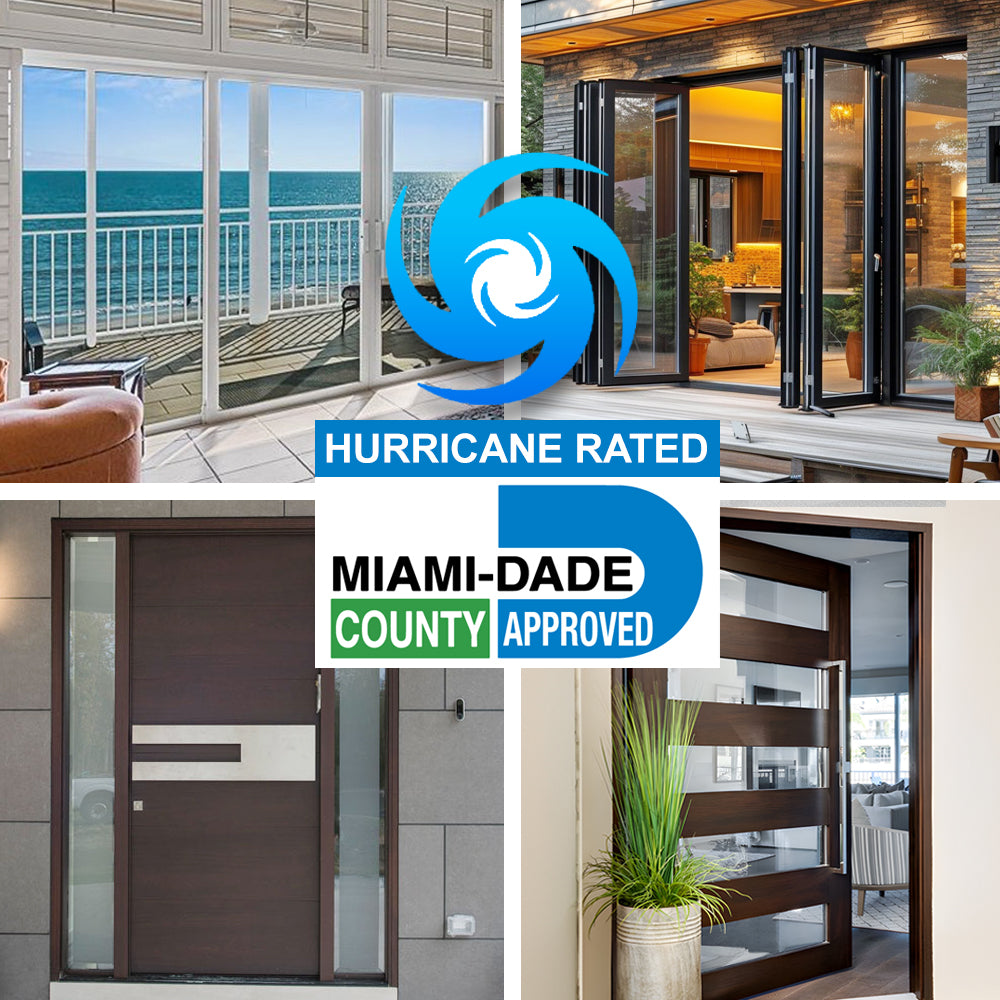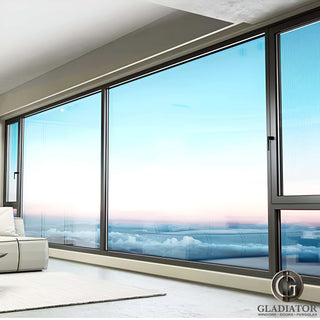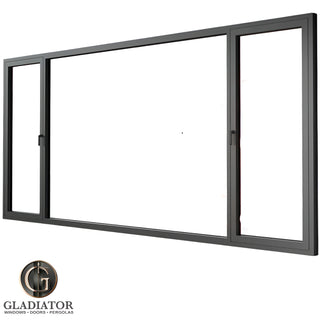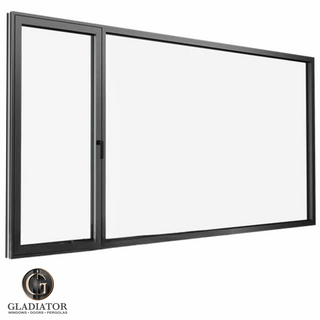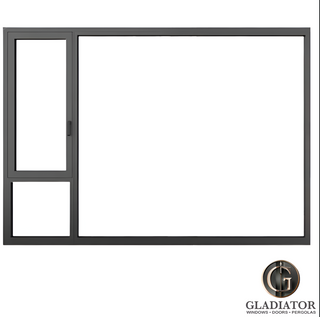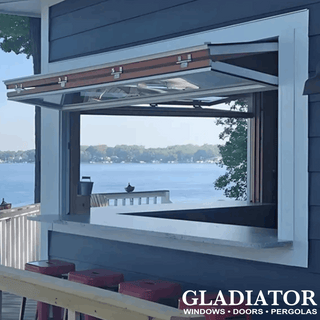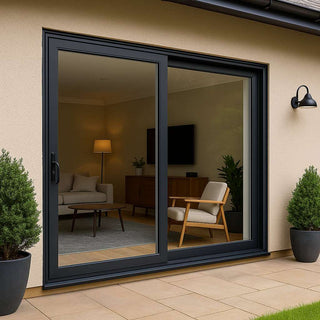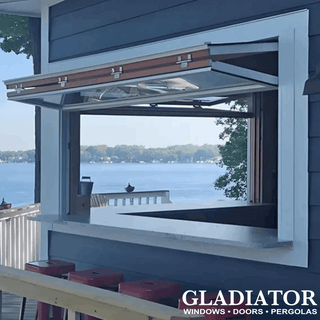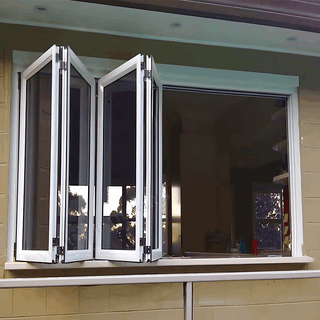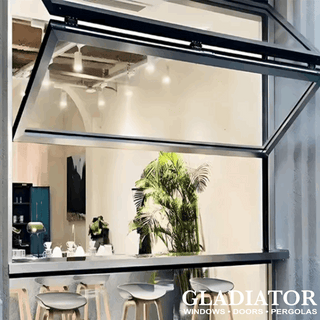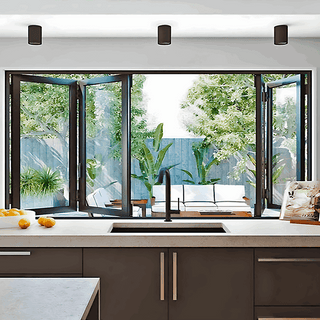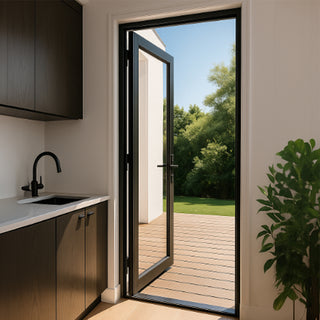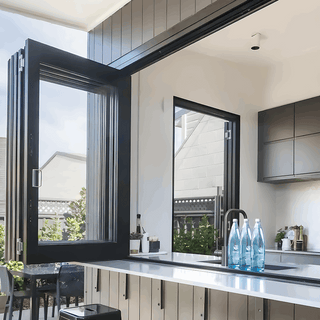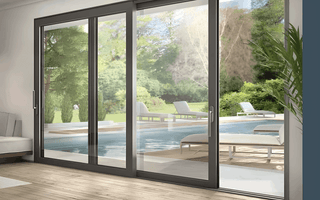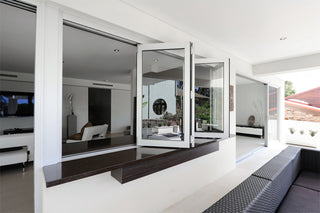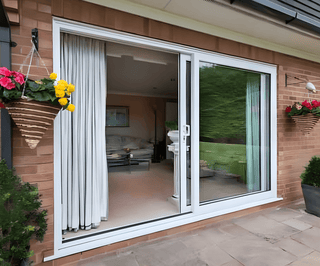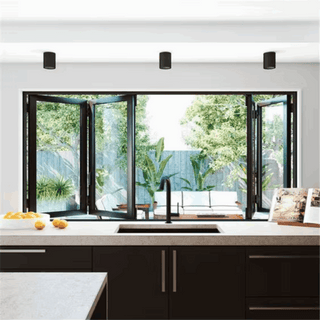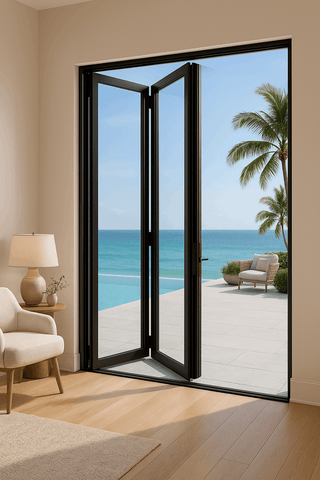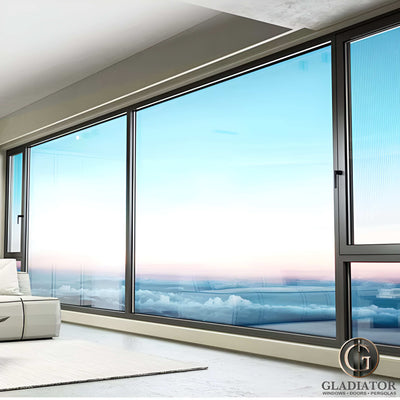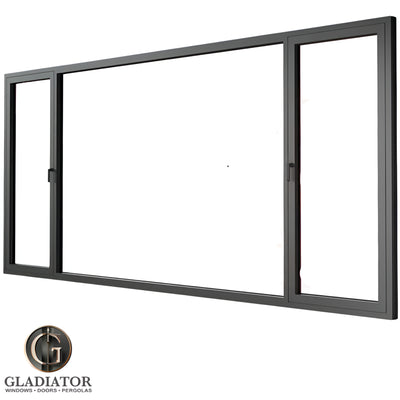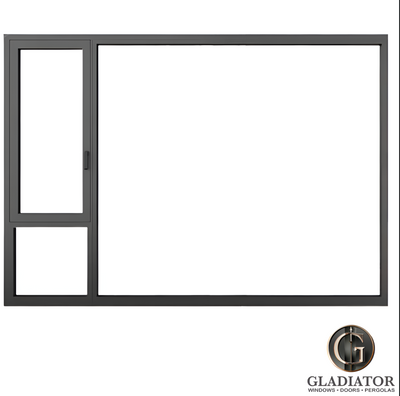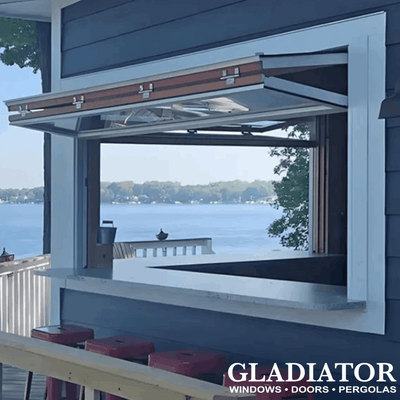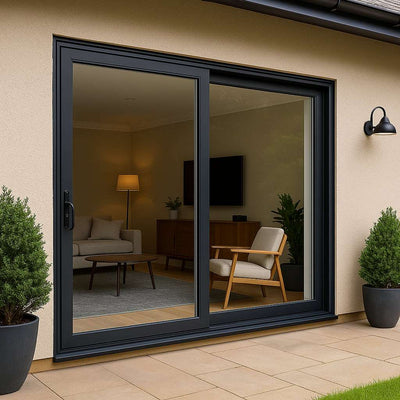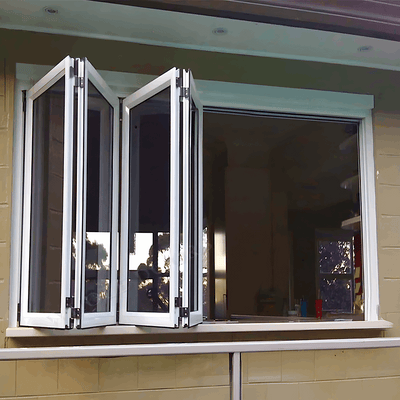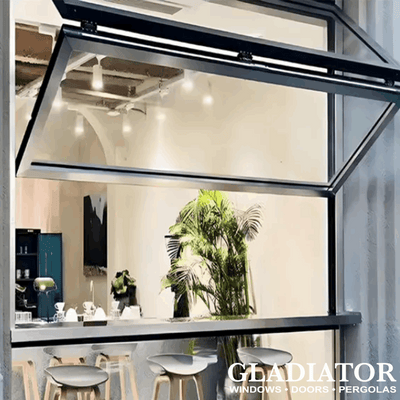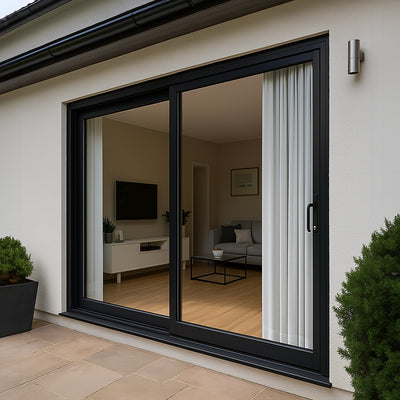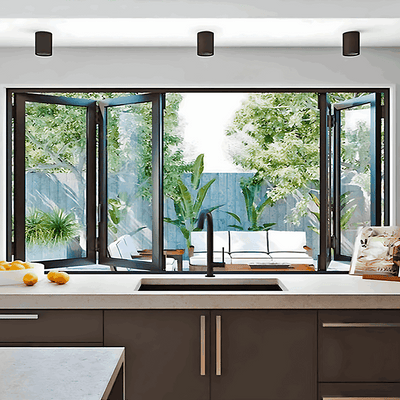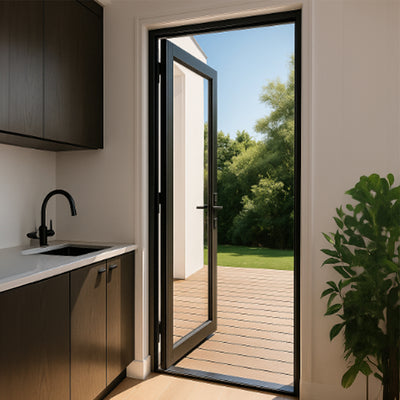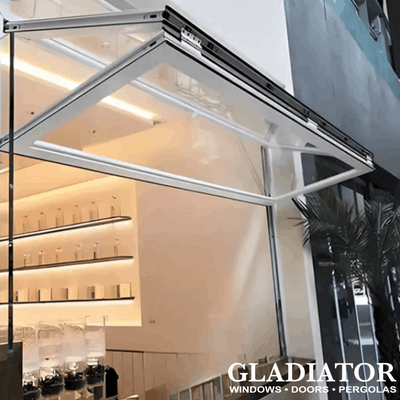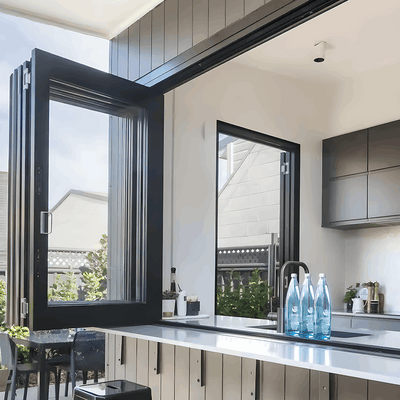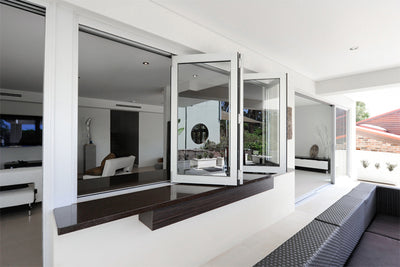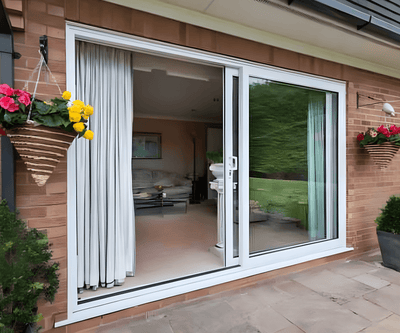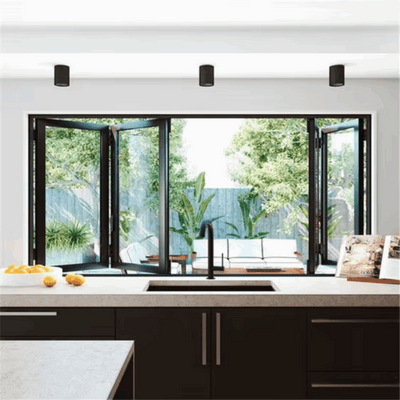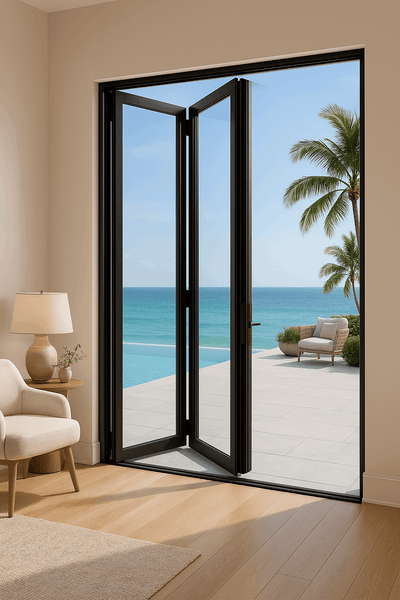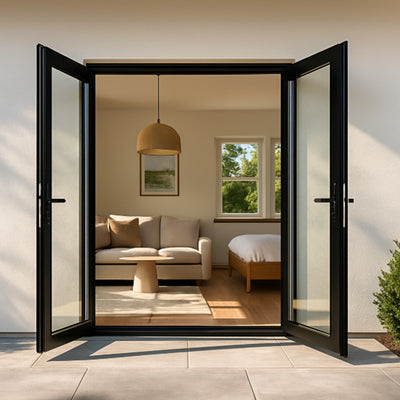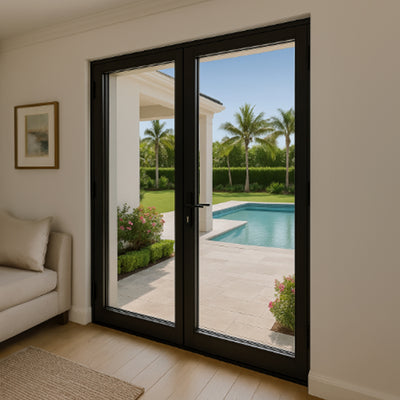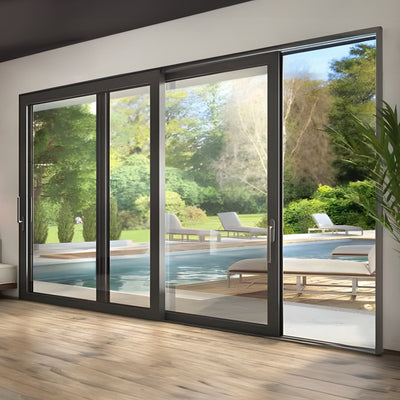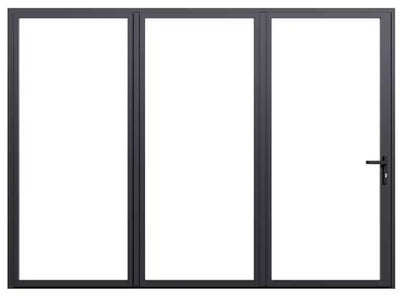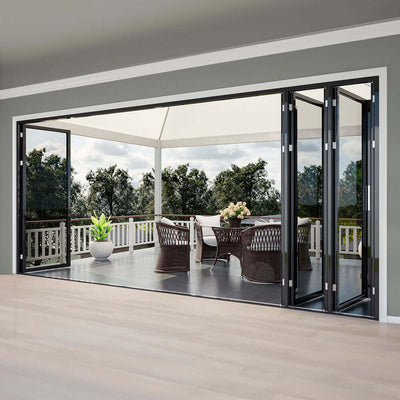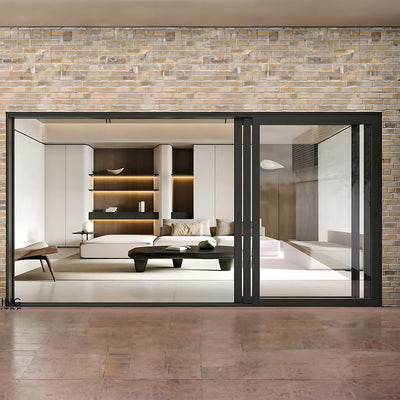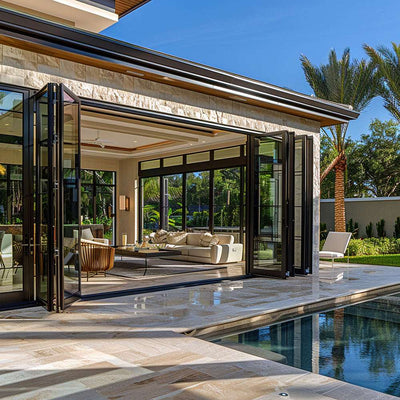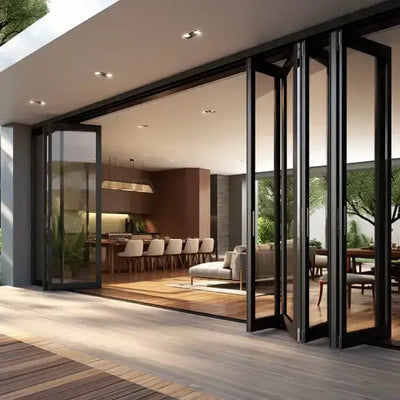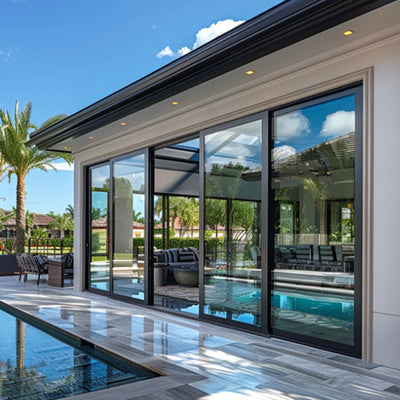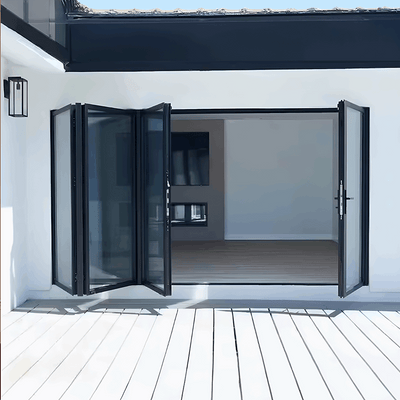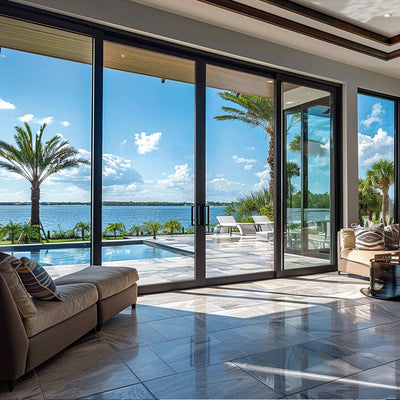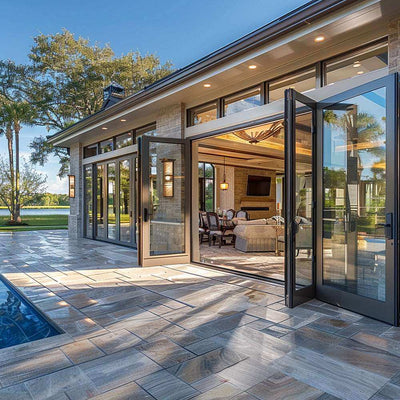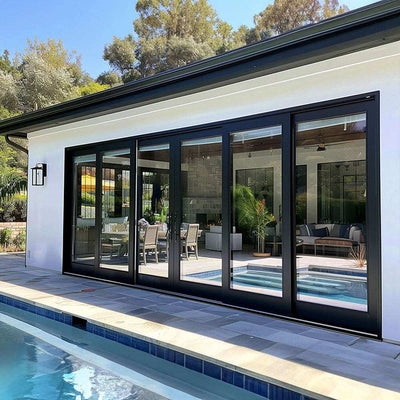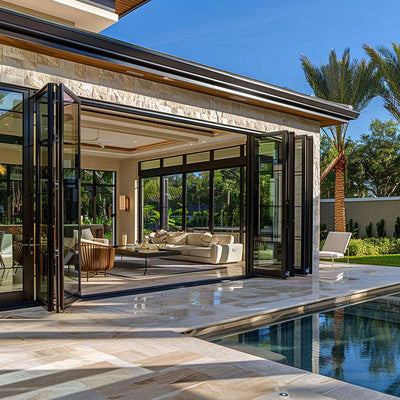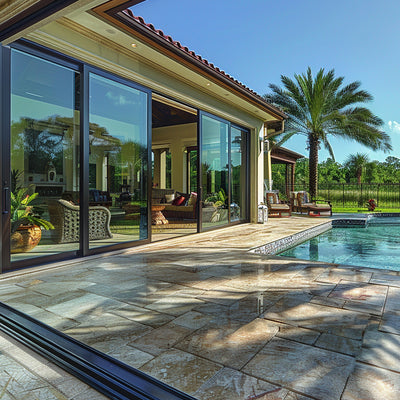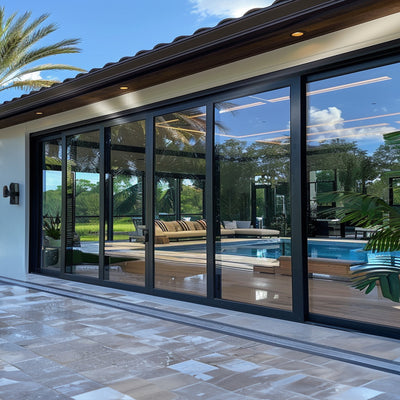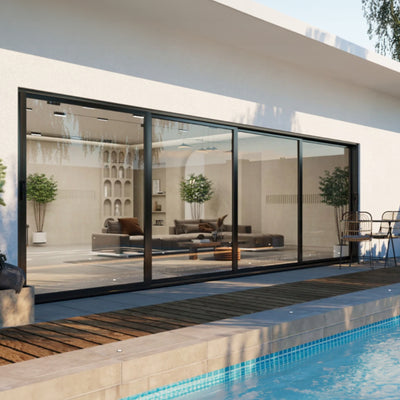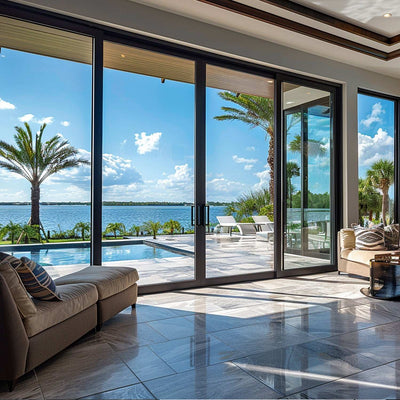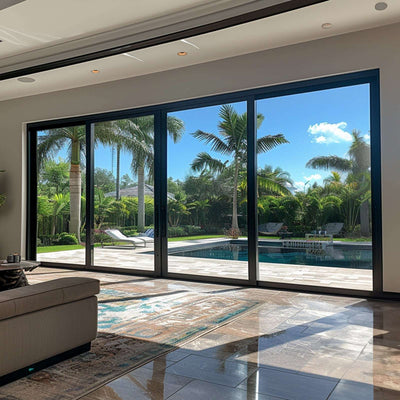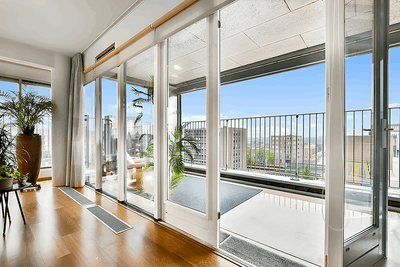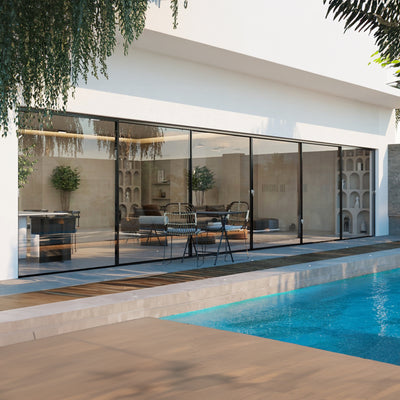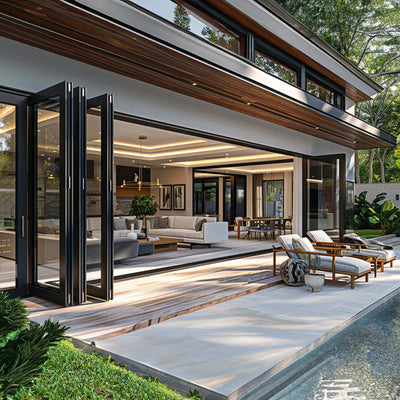The Science Behind Energy Efficient Windows
Energy efficient windows are much more than simple glass panes. They are precisely engineered systems designed for optimal energy performance. These windows utilize several key technologies to minimize heat transfer and maximize your home's comfort. A primary component is multiple glazing layers. Much like layering clothing on a cold day, multiple panes create insulating air pockets, trapping heat and preventing escape.
Another vital element is the low-E coating. This thin, nearly invisible metallic layer applied to the glass reflects infrared radiation, the source of heat transfer, while allowing visible light to pass through. During winter, the low-E coating reflects heat back into the room. Conversely, during summer, it reflects the sun's heat away, keeping the interior cool.
Understanding Key Components
Beyond glazing and coatings, other components contribute significantly to a window’s energy efficiency. Frame materials have a substantial impact. Wood offers a classic aesthetic but can be prone to rot and warping. Vinyl frames provide excellent insulation and are low-maintenance, while fiberglass offers exceptional strength and durability. You might find more information on window materials in our sitemap of blog posts.
The space between glass panes is also crucial. It’s often filled with inert gases like argon or krypton. These gases possess lower thermal conductivity than air, further minimizing heat transfer. The spacers separating the panes also contribute, with some incorporating warm-edge technology to minimize heat loss at the glass edges.
The growth of the energy-efficient window market highlights these advancements. The global market is projected to rise from USD 22.76 billion in 2024 to USD 42.78 billion by 2033, reflecting a 6.9% CAGR. This impressive growth stems from factors like increased consumer awareness and stricter energy efficiency standards. Learn more about market statistics.
How It All Works Together
These individual elements work together to form a powerful thermal barrier. The multiple glazing layers, low-E coatings, and gas fills reduce conductive and radiative heat transfer. Well-designed frames and spacers further limit heat loss around the window edges. The outcome is a window that maintains a comfortable indoor temperature year-round, reducing energy bills, HVAC strain, and your carbon footprint.
Beyond Energy Bills: The Real Benefits You'll Experience
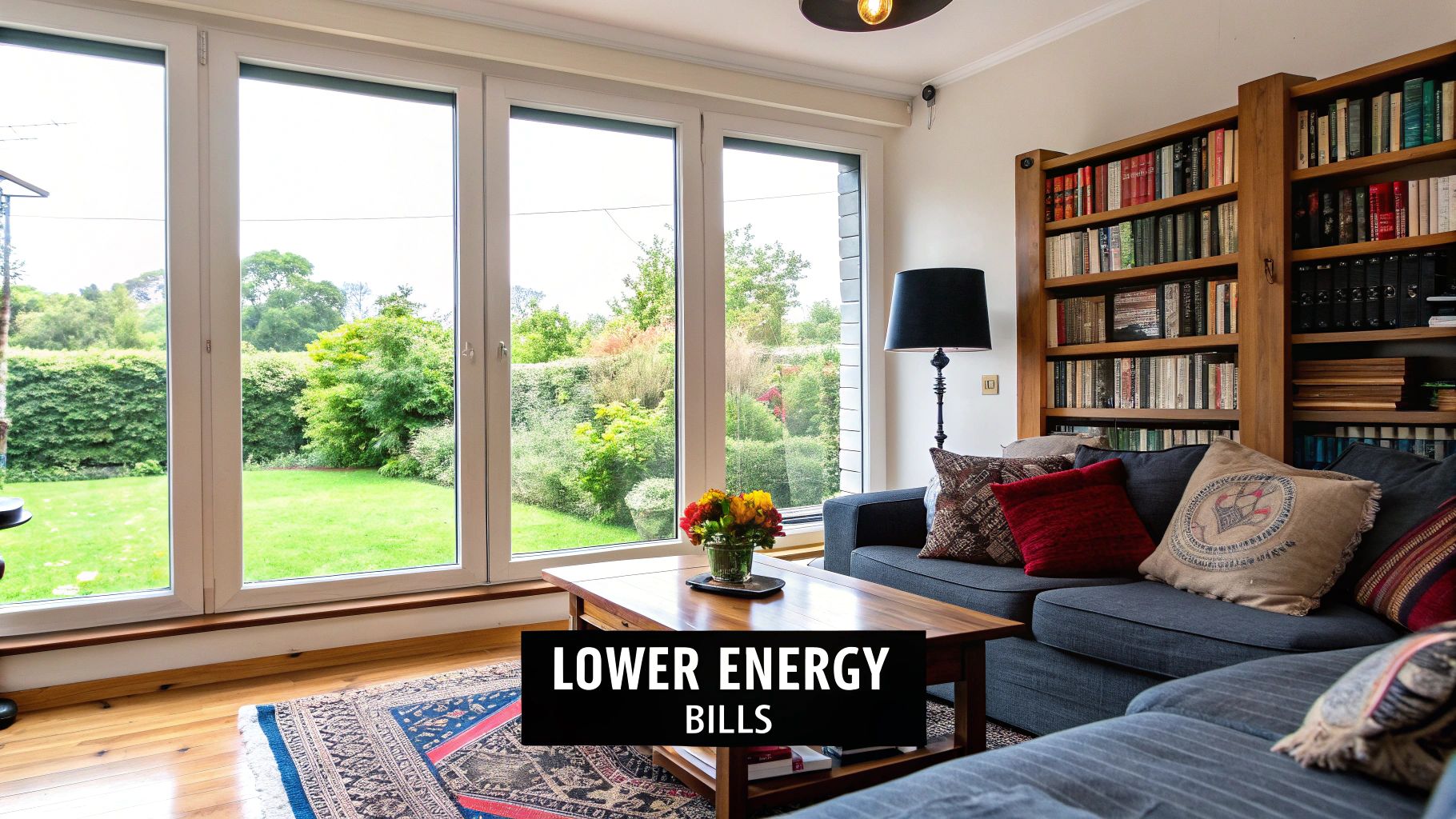
Energy efficient windows offer much more than just lower energy costs. They significantly improve the comfort of your home. By minimizing drafts and cold spots, these windows create a more consistent and enjoyable temperature, making even the coldest days more bearable.
In the summer, energy efficient windows reduce heat gain, lessening your reliance on air conditioning. This keeps your home cooler and more comfortable while also saving energy. As a bonus, these windows protect your furniture and flooring from harmful UV rays, preserving your interior and contributing to your home's long-term value.
Enhanced Comfort and Indoor Environment
Beyond temperature regulation, energy efficient windows offer improved sound insulation. Multi-paned and laminated glass options can significantly dampen outside noise, creating a quieter and more peaceful indoor environment. This is a major benefit for homes in bustling neighborhoods or near airports. For even more natural light, consider the benefits of skylights.
The increasing popularity of energy efficient windows is reflected in current market trends. The residential segment was valued at approximately USD 11.4 Billion in 2024 and is projected to grow at a CAGR of 8.5% from 2025 to 2034. This growth is driven by homeowner demand for energy savings and comfort, coupled with increasingly stringent building codes promoting energy efficiency. You can find more detailed market statistics here.
Long-Term Value and Reduced Maintenance
Another advantage is the reduced strain on your HVAC system. Because energy efficient windows help maintain stable indoor temperatures, your heating and cooling system doesn't have to work as hard. This can extend the lifespan of your HVAC equipment, reducing potential maintenance costs. For more information about windows and doors, check out this guide. Additionally, energy efficient windows minimize condensation, which can prevent the growth of mold and mildew.
Finally, these windows can increase your home’s resale value. Today's buyers are more aware of the benefits of energy efficiency. Features like increased comfort and lower utility bills are attractive selling points that can result in a higher selling price.
The following table details potential savings you could see by switching from single-pane windows to energy-efficient ones.
Energy Efficient Windows Savings by Climate Zone This table shows the estimated annual savings on heating and cooling costs when upgrading from single-pane to energy efficient windows across different climate regions.
| Climate Zone | Average Annual Savings | Heating Reduction | Cooling Reduction | Typical ROI Period |
|---|---|---|---|---|
| Data needed | Data needed | Data needed | Data needed | Data needed |
As you can see, the savings potential varies depending on the specific climate zone. Consult a local window professional to get accurate estimations for your area.
Finding Your Perfect Match: Window Types Decoded
Understanding the diverse world of energy-efficient windows is crucial for making the right choice for your home. This decision involves considering your home's architectural design, the local climate, and how much ventilation you desire.
Exploring Window Styles
Different window styles offer various advantages in energy efficiency, ventilation, and overall aesthetic appeal. Casement windows, hinged on one side, provide an excellent seal against air leakage. Double-hung windows, a timeless option, work well in older homes and offer flexible ventilation. For optimal natural ventilation, awning windows, hinged at the top, allow airflow even during light rain. For more information about choosing the right windows and doors, check out this resource: How to master your window and door choices.
Frame Materials and Their Impact
Window frame material significantly impacts energy performance and maintenance needs. Vinyl frames are budget-friendly with excellent insulation and require little maintenance. Fiberglass offers remarkable strength, durability, and weather resistance. Wood, while possessing a classic beauty, needs more frequent maintenance to prevent damage.

This infographic showcases the construction of double-pane, triple-pane, and Low-E windows. The number of glass panes and Low-E coatings influence a window's insulation and heat transfer control.
Glass Packages and Climate Considerations
The right glass package is essential for energy efficiency in your specific climate. Triple glazing provides superior insulation in colder climates. Low-E coatings benefit all climates, but are particularly effective in hot climates, reflecting the sun's heat. The energy-efficient window market, valued at USD 15.1 billion in 2024, is projected to grow at a CAGR of 8.6% from 2025 to 2034, due to rising energy costs and sustainable building practices. Learn more about this growing market here.
To help illustrate the differences between various window types, the following table provides a comparison of energy efficiency ratings, ideal climates, cost, lifespan, and maintenance levels.
Energy Efficient Window Types Comparison A comprehensive comparison of different window styles and their energy efficiency characteristics to help consumers choose the right option.
| Window Type | Energy Efficiency Rating | Best Climate Use | Cost Range | Lifespan | Maintenance Level |
|---|---|---|---|---|---|
| Casement | Excellent | Varies, good for wind resistance | Moderate to High | 20-30 years | Low |
| Double-Hung | Good | Versatile, suitable for most climates | Moderate | 20-30 years | Low to Moderate |
| Awning | Good | Hot and humid climates, good for ventilation | Moderate | 15-20 years | Low |
| Fixed | Excellent | Varies, primarily for views and light | Low to Moderate | 20+ years | Low |
| Sliding | Good | Moderate climates | Moderate | 15-20 years | Low to Moderate |
| Bay/Bow | Fair | Varies, adds architectural interest | High | 20-30 years | Moderate |
This table highlights key differences in window performance, helping you choose the best window for your needs. Consider factors like energy efficiency, cost, and maintenance when making your final decision. Consulting a window professional can help you navigate these options and ensure you choose the most energy-efficient windows for your home.
Decoding Window Ratings: What Actually Matters
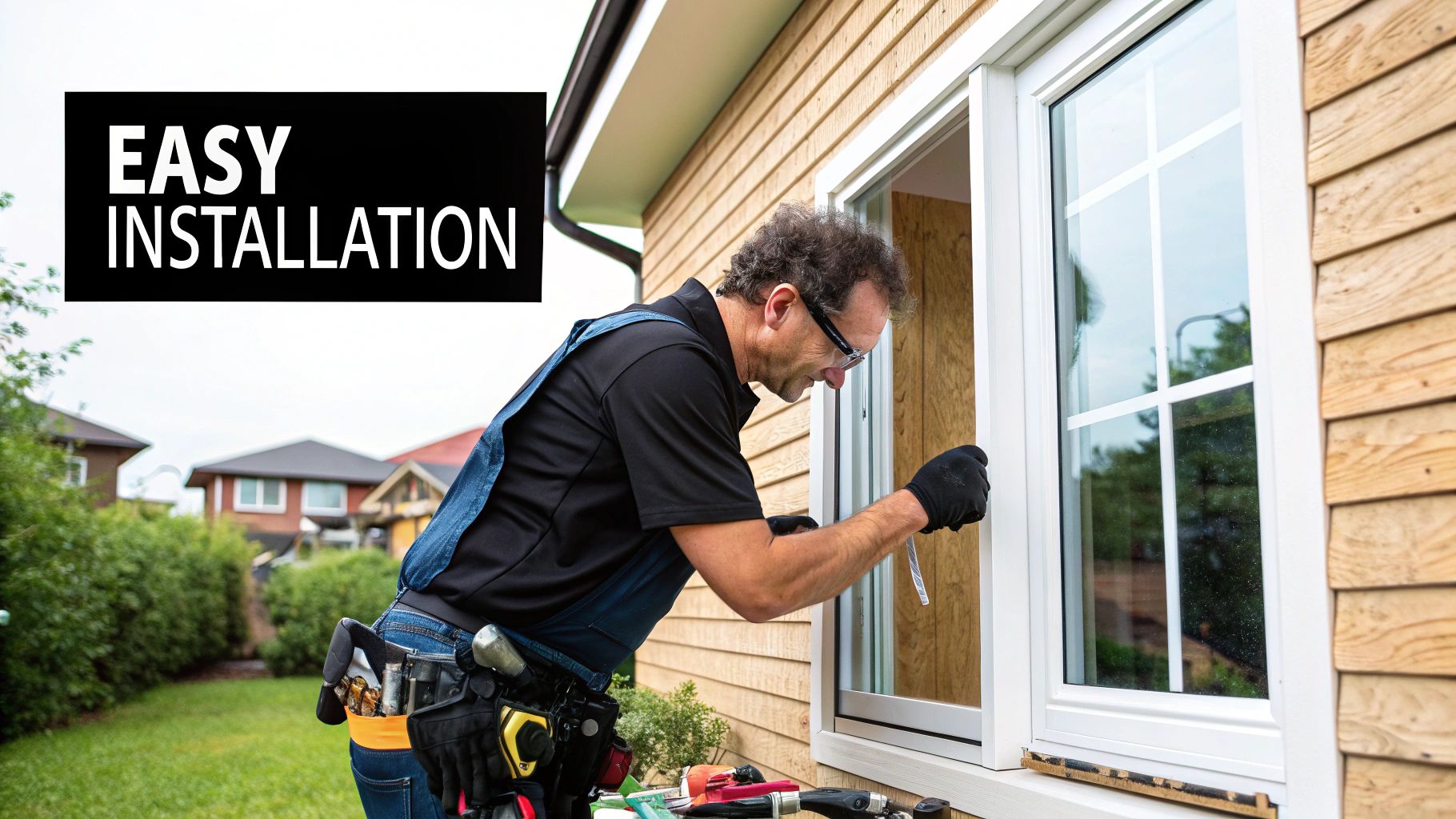
Understanding window energy ratings can be confusing. This section simplifies the key ratings, helping you make smart choices for a comfortable, energy-efficient home.
U-Factor: Measuring Heat Transmission
The U-factor, also known as the U-value, measures how well a window prevents heat from escaping. A lower U-factor means better insulation. Imagine a winter coat: the lower the U-factor, the warmer the coat.
For those in colder climates, a low U-factor is essential for warmth and lower energy bills. A window with a U-factor of 0.25 is significantly better at insulating than one with a U-factor of 0.50.
Solar Heat Gain Coefficient (SHGC): Managing Sunlight
The Solar Heat Gain Coefficient (SHGC) measures how much solar heat enters through a window. A lower SHGC means less heat comes in. This is especially important in warmer climates.
A lower SHGC keeps your home cooler in the summer, reducing the need for constant air conditioning. A window with an SHGC of 0.30 allows less solar heat through than one with an SHGC of 0.60. This translates to a cooler home and lower energy costs.
Air Leakage: Sealing Out Drafts
Air leakage measures how much air passes through window gaps. A lower rating signifies a better seal, enhancing comfort and energy efficiency. It's like sealing cracks around a door to stop drafts. For more information on windows and doors, check out this guide on choosing the best windows and doors.
ENERGY STAR® Certification: A Mark of Quality
The ENERGY STAR® label indicates a window meets or exceeds energy efficiency standards set by the Environmental Protection Agency (EPA). This label simplifies choosing energy-saving products.
NFRC Labels: Comparing Apples to Apples
The National Fenestration Rating Council (NFRC) label provides a standardized system for comparing window performance. It includes the U-factor, SHGC, and other important ratings, making it easier to compare different windows and choose the best fit.
Investing in energy-efficient windows offers long-term comfort and energy savings. By understanding these ratings, you can confidently choose the right windows for your home.
Installation Secrets That Protect Your Investment
Even the highest-quality energy-efficient windows can underperform if they're not installed properly. Getting the installation right is just as important as the window itself for achieving optimal energy savings and a comfortable home. This means understanding the critical installation steps that can either maximize or completely undermine the value of your new windows.
The Importance of Proper Flashing
Flashing, a thin layer of waterproof material installed around the window frame, plays a vital role in preventing water damage. If flashing is installed incorrectly, it can lead to leaks, wood rot, and reduced energy efficiency. This seemingly minor detail has a surprisingly significant impact on how long your windows last and how well they perform. Think of flashing like the seams on a waterproof jacket—if the seams aren't sealed correctly, the jacket won't keep you dry.
Precise Measurements and Air Leakage
Accurate measurements are crucial for ensuring a good fit and maximizing window performance. Even a small gap between the window and the frame can significantly affect energy efficiency. This gap can lead to increased air leakage, resulting in higher heating and cooling bills and a less comfortable living environment.
Choosing the Right Expanding Foam
Expanding foam is a common material used to seal gaps around windows. However, it's important to remember that not all expanding foams are the same. Choosing a low-expanding, closed-cell foam designed specifically for window installation is essential. Using the wrong type of foam can create thermal bridges, which are areas where heat can easily transfer between the inside and outside of your home. Thermal bridges can negate the benefits of your energy-efficient windows.
Weathersealing: More Than Just Caulk
While a simple bead of caulk may seem sufficient, effective weathersealing requires a more comprehensive approach. Using high-quality sealant and applying it correctly is crucial for preventing drafts and maintaining a tight seal around your windows. How to master your window and door choices. A skilled installer will understand the nuances of different sealants and apply them with precision.
Identifying Qualified Installers
Finding a qualified installer can make all the difference in the success of your window project. Asking the right questions can help you distinguish experienced professionals from those who might cut corners. Be sure to ask potential installers about their experience with energy-efficient windows, their flashing techniques, and their approach to air sealing. A competent installer will be able to clearly explain their process and provide references. Professional documentation and post-installation testing are further indicators of a commitment to quality workmanship.
Verification and Testing: Ensuring Performance
Finally, post-installation testing is vital for confirming that your new windows are performing as expected. Tests, such as blower door tests, can detect air leaks and help you identify areas that need additional sealing. This crucial final step ensures that your energy-efficient windows deliver the comfort and energy savings you expect. By paying close attention to these installation secrets, you can protect your investment and enjoy the full benefits of your energy-efficient windows for years to come.
Maximizing Your ROI: Smart Investment Strategies
Energy-efficient windows offer significant long-term value. However, understanding the financial aspects beyond the initial price tag is crucial for homeowners. Let's explore how to make informed decisions and maximize your return on investment when upgrading your windows.
Navigating the Economics of Window Upgrades
Upgrading to energy-efficient windows is a substantial home improvement project, often impacting other areas of your home. For example, if your kitchen remodel includes new windows, understanding the pros and cons of cabinet refacing vs. replacement can significantly influence your overall project ROI. Consulting with an energy auditor or a home value expert can offer valuable insights into cost versus benefit. They can help you understand the potential return and develop a plan that aligns with your budget and long-term goals.
Leveraging Incentives and Rebates
Several financial incentives can help offset the upfront costs of energy-efficient windows. Many energy companies offer utility rebates, providing direct discounts on qualifying window installations. Tax advantages, such as federal and state tax credits, can also significantly reduce your overall project expenses. Exploring these programs and incorporating them into your budget can make energy-efficient windows a more affordable investment.
Strategic Installation Phasing for Maximum Impact
For homeowners on a tighter budget, phasing the window installation over time is a practical solution. Prioritize windows offering the greatest energy savings potential, such as those with northern or southern exposures. Addressing the most impactful areas first allows you to start enjoying the benefits of energy-efficient windows sooner while managing the overall investment.
Calculating Your Payback Period
Determining your personalized payback period involves several key factors. Your current energy costs, the performance of your existing windows, and your local climate all play a role in how quickly your investment pays for itself through energy savings. This individualized calculation gives you a realistic timeframe for recouping your initial costs through reduced energy bills.
Beyond Energy Savings: The Hidden Returns
The financial benefits of energy-efficient windows extend beyond lower energy bills. Reduced maintenance costs, due to features like minimized condensation and improved window durability, contribute to the long-term value. Enhanced comfort, better sound insulation, and increased property value further enhance the overall return, adding significant value to your home beyond simple energy savings.
Ready to upgrade your home's energy efficiency, comfort, and curb appeal? Visit Gladiator Window and Doors today to explore their selection of high-quality, energy-efficient windows and doors. They offer custom-made options and guarantee the lowest prices in the USA, helping you achieve the home of your dreams without exceeding your budget.








